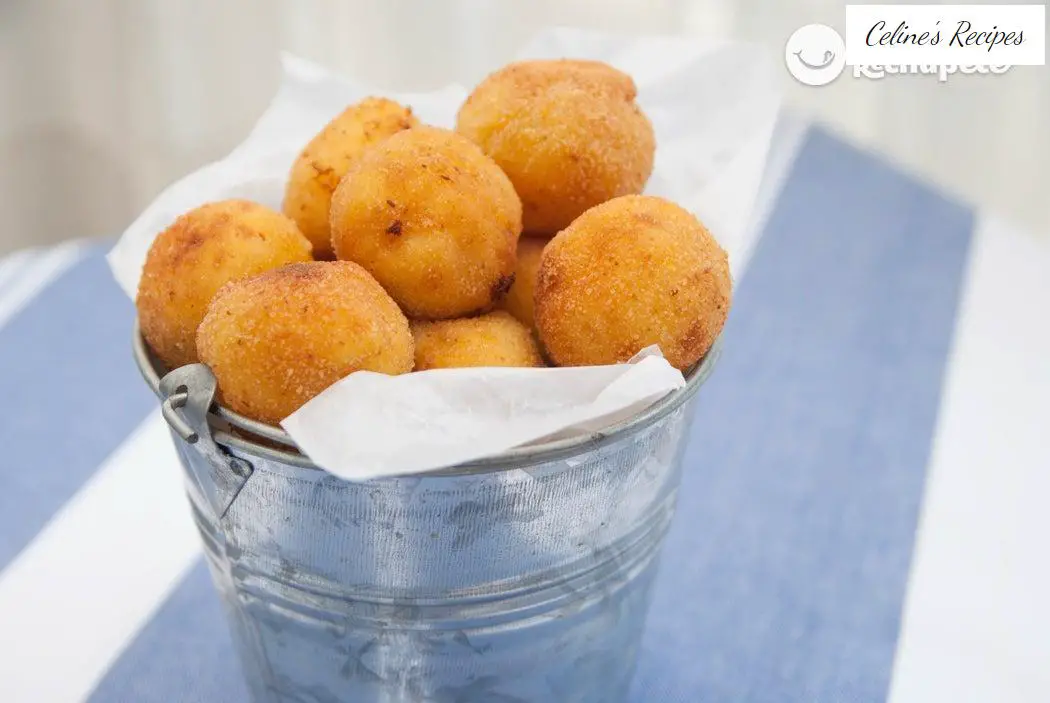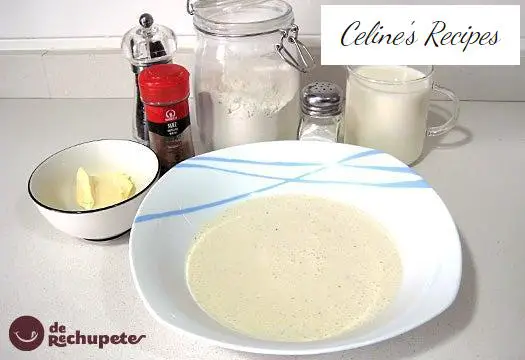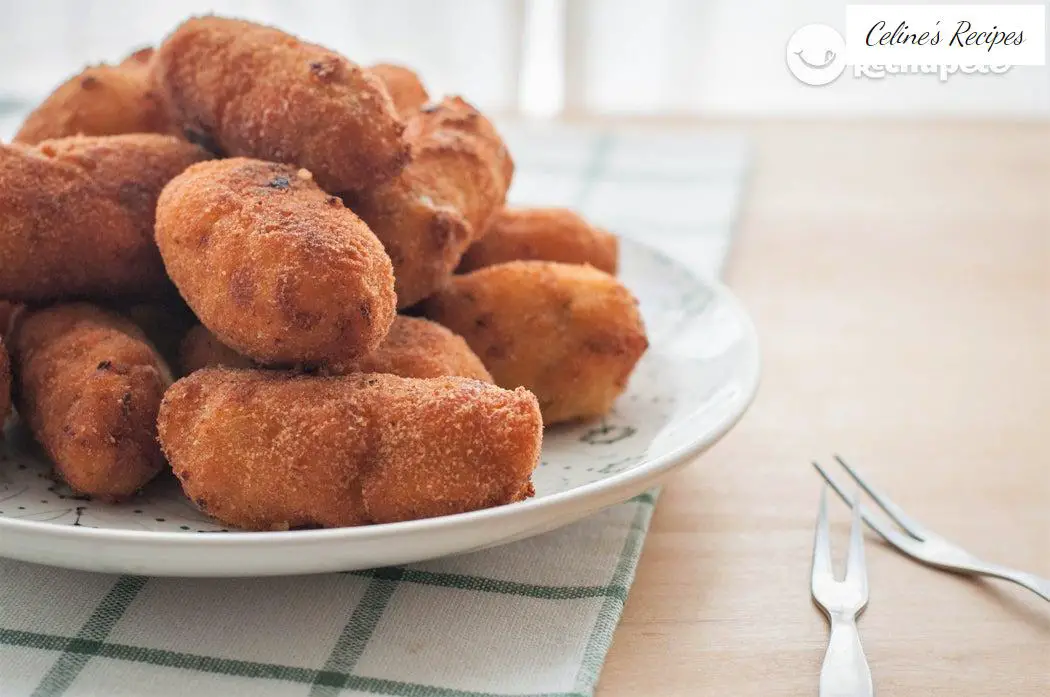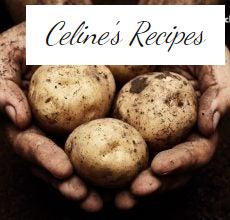The secret recipe of the best croquettes in the world .
Bechamel , whatever, battered and fried. Being so simple, what can go wrong? Everything!
Although this simplistic description does not do justice to the great bites of croquetil joy that we have eaten in our lives, it does give us an idea of how easy it is to prepare them .
Of course, they have a trick and thanks to them, croquettes have become a reason for praise to grandmothers, aunts and mothers who claim to have the best secret recipe in the world.
.instagram-follow img{width:100%;height:auto;} @media screen and (min-width: 1000px) {.instagram-follow {display:block;clear:both;float:right;width:50%;margin-left:1em;}}
As a mother there is only one, we have compiled the secrets of several of them to discover the true secret of croquette. Spoiler alert: there is more than one.

The béchamel. The base of all good kibble
Let’s start well. It is a very simple sauce but it has a trick to find the perfect balance between flavor, consistency, flour, butter and milk .
Here the mothers interviewed have given us several recipes, although all, in reality, came to the same conclusion: the rule of proportions is what rules.
50-50-500: medium consistency béchamel. If you like more liquid croquettes, it is yours.
- 50g butter
- 50g flour
- 500ml milk
For your croquettes, the Proportion n aurea would be less milk, of course. You need a more solid paste. Remember that later you will want to shape it.
So it would be: 50-50-400
- 50g butter
- 50g flour
- 400ml milk
To avoid skimping on secrets, the day you want to use the béchamel sauce , for example for cannelloni, your thing is to add more milk. Let’s say that with about 600ml it will be fine.
What seems so simple, begins to revolutionize with the alternatives of each family .
- To make the béchamel taste more of the rest of your croquette ingredients, you can use half milk, half broth of the preparation. Like the cooked one.
- You can use half butter and half extra virgin olive oil . Keep in mind that a good EVOO will add flavor to the preparation.
- If you make ham croquettes or use an ingredient that loosens some fat during cooking, you can reduce the amount of butter a little. A little. Little bit.

With the ingredients ready, we have to prepare the bechamel .
- Melt the butter in a saucepan over low heat.
- Before it is completely liquid and you risk burning it, add the flour so that it toasts a little. Toasting does not mean that it is black or golden, it is simply a little so that the croquettes do not taste like raw flour.
- Constantly stir the roux (as connoisseurs call mixing flour and fat to make base sauces). The chunky-armed grandmothers suggest that you should stir for 10 minutes.
- We add the milk little by little and stir well until it is fully incorporated.
- Here you can go up to medium heat until the ingredients are well linked. But don’t let it boil, if it does … you’ll have to start over.
- Remember that while it is hot, the béchamel will be more liquid than when it is cold. So don’t panic if it doesn’t have the expected consistency.
- The béchamel will be ready for croquettes when, when stirring, it detaches easily from the walls of the saucepan. Remove it from the heat and continue stirring if it is about to boil (the typical “chup, chup” begins).

The tricks for an irresistible bechamel
- Sift the flour to avoid lumps.
- If you see the lumps become stubborn, flatten them with the back of the spoon.
- The definitive solution for stubborn lumps, when the bechamel is ready, pass it through the processor or blender.
- If you go overboard with the toasting of the flour, the béchamel will be very liquid, regardless of the proportions of the ingredients.
- You will see the final consistency of the bechamel when it is at room temperature or cold. But what if you are already seeing that it will need a miracle for it to have the thick consistency that you are looking for? Keep it on low heat and stir constantly until the liquid has evaporated. If it was too loose, keep it on very low heat and keep stirring. The most vigorous grandmothers will tell you that for at least an hour.
How to season your béchamel
- The difference between a sad and a wonderful béchamel is the seasoning. Salt and pepper are your allies. But the nutmeg is the one that will give it the master touch.
- If the nutmeg is fresh, better than better. But the one that comes in powder works well, too.
- Be generous, but cautious. If you do not master this seasoning, add, stir and taste until you get a pleasant flavor that is rich without the need for other ingredients.
- Of course, do not overdo the seasonings either because later you are going to add other flavors and you do not want to saturate.
- You can always rectify the seasoning once all the ingredients are incorporated.
Bechamel with onion
Just as there are detractors of the omelette with onion, there are those who do not conceive that it is also in the croquettes. However, if you want to give it a different touch, you can do the following:
- When you melt the butter in your bechamel sauce, add the finely chopped onion (as small as possible). Once it is transparent you can add flour and continue the steps of the roux that we explain above.
What can go wrong with your bechamel?
- If the roux and milk are at the same temperature, lumps come out.
- If the roux is hot (never boiling), use cold or room temperature milk.
- If the roux is rather cold, heat the milk a little. If the milk is hot, slightly cool the roux.
For your gluten-free croquettes , using Schär gluten-free flour (it is also worth using Maizena, corn starch). Another idea is to use chickpea flour . Of course, keep in mind that it will influence the final flavor. If you prefer whole wheat flour , it can also work well for béchamel.
If you want lactose-free croquettes , change the butter for EVOO (Extra Virgin Olive Oil) and use lactose-free milk.
You also have the option of using soy milk (without sugar). Compared to other vegetable drinks, soy drinks contain more protein, which makes béchamel have more body.
With the béchamel ready, bring the croquette to life!
The croquettes are your allies when it comes to giving a second life to that spectacular stew of grandmother or those leftovers from Christmas dinner, even that leg of ham that refuses to finish.
For tastes, the croquettes. And within your possibilities come classic and newer recipes that also take intolerances and preferences when it comes to eating.
We are not going to go into many details, because you already have the complete recipes on the blog , but here are some of the most popular recipes:

Tuna croquettes
- Before cooling the bechamel, open a can of canned tuna, draining the olive oil.
- You can use pickled tuna if you like more intense flavors. But always remember not to add the oil.
Cooked croquettes
- In this recipe I play with butter and extra virgin olive oil to create a different flavor.
- When preparing the ingredients, remember to remove the skin from the protein (meat, sausage, blood sausage), then the picas or crumbs.
- Sauté all the ingredients in the pan and, oh my! to the béchamel.
Cheese croquettes
Mushroom croquettes
Octopus croquettes
Ham croquette
Lacón croquettes
Chicken croquette
Shrimp croquettes
Cod croquettes
Mussel croquettes. Tigers
Rice croquettes

Shape the kibble
Once your bechamel has all the ingredients incorporated and you have verified its flavor, it is time to stretch your preparation in a source.
To avoid leaving it with a dry crust, cover the surface with plastic wrap and let it rest in the fridge. Many grandmothers recommended leaving it in the fridge the night before.
When the dough is cold, it’s time to call the family to help you out with the shaping and coating of your croquettes.
- You can shape it with two spoons.
- Your hands can help you create balls or more oval.
- Disposable plastic sleeves (the ones you use to decorate cakes) can help.
- Make your own sleeve by making a funnel out of kitchen paper or use a food freezer bag (more than anything to make sure that that plastic can hold food) and cut one of the vertices the size you want your “churros” to be.
- If you are going to use another type of bag, clean it. It is not enough that it looks clean. That it is clean is essential.
- It may also be a good idea to call the youngest members of the household to collaborate in the task of making food.
- After all, croquettes always have a taste of home, memories, laughs in the kitchen with grandmothers and aunts. Take the opportunity to create great anecdotes for life.
Trick to shape the croquettes
Moisten your hands or the spoon with water (or milk) to prevent the preparation from sticking.

The batter
Here, too, traditional family games come into play.
- You can do it simple: pass your croquettes for egg and then coat them in breadcrumbs.
- If you want them to be crispier, the batter can be double: breadcrumbs + egg + breadcrumbs.
Crochet batter tricks
- If you like very thick batter , you can directly use Panko , with which, in addition, you will be reducing the amount of calories.
- For thinner cuts , breadcrumbs, which you can make yourself by leaving it very finite. Ideal for those who make their own bread without gluten or without refined flours , for example.
- You can coat your croquettes and then let them rest for a little while . In this way, the exterior will be firmer and with that the resistance when frying will increase.
- Don’t get excited stacking them at the source. Give it room so they don’t get crushed.
For a vegan batter (without eggs), you can use oat milk (without sugar) or rice milk.
Moisten your hands with the milk, shape your croquette, boil it, run it through the milk and boil it again.

Fry your croquettes
When you have your arsenal of croquettes ready, it’s time to fry them in hot oil. Here we have a special article where we collect all our tips and recommendations for frying your croquettes and that they do not open or remain greasy. I advise you to go through it.
Fry your croquettes and they are perfect.
Hot is not boiling. It should be at 180º C (although in the investigation there were grandmothers who did not give an arm to twist and assured that it should be between 150º and 170ºC), that is to say, do not smoke.
Doing so means it has taken too high a temperature and will begin to lose its nutritional properties.

Tricks for a perfect croquetil fry
- Extra virgin olive oil will always be better than sunflower or corn oil.
- If the oil temperature is too low, your kibbles will absorb too much and become heavy.
- If the temperature is very high (more than 200º), the final flavor will not be very pleasant and you will run the risk of toxic substances such as acrolein or hydroperoxides.
How many croquettes to make?
Many. The most common is to prepare a very good amount to freeze or consume the next day. It will be enough to reheat them in the oven with a homemade tomato sauce, for example.
More liquid, thicker to your liking, the truth is that the best croquette in the world is the one you like the most, the one that makes you travel through time with memories and the one that best suits you. So what is yours?
Frozen croquetil
To freeze kibbles , place them in a dish (without heaping, we put them in the freezer and after 12 hours and they are like stones, separate them and keep them in a clean and closed plastic bag.
You can read our special post on how to preserve and freeze croquettes. I am sure it will be very useful for you.
Did you like it? Share it!
Share Tweet Pin it To print
Receive a weekly email with new recipes and yummy recommendations.
Think of Pixels SL as the owner of Recetasderechupete.com, it will use the data you provide in this form only to send you blog updates. We treat your data with respect. For more information see the Privacy Policy . You can change your mind at any time and unsubscribe by clicking on the footer of any email you receive from this website, or by contacting [email protected]. Yummy recipes use Mailchimp as a platform for sending emails. Mailchimp is covered by the EU-US Privacy Shield agreement, approved by the European Data Protection Committee. By submitting this form you agree that your data will be transferred to MailChimp to process it in accordance with its Privacy Policy .
If you liked this article you will like:

Printable weekly menu template

Freeze. What can be frozen and what cannot







